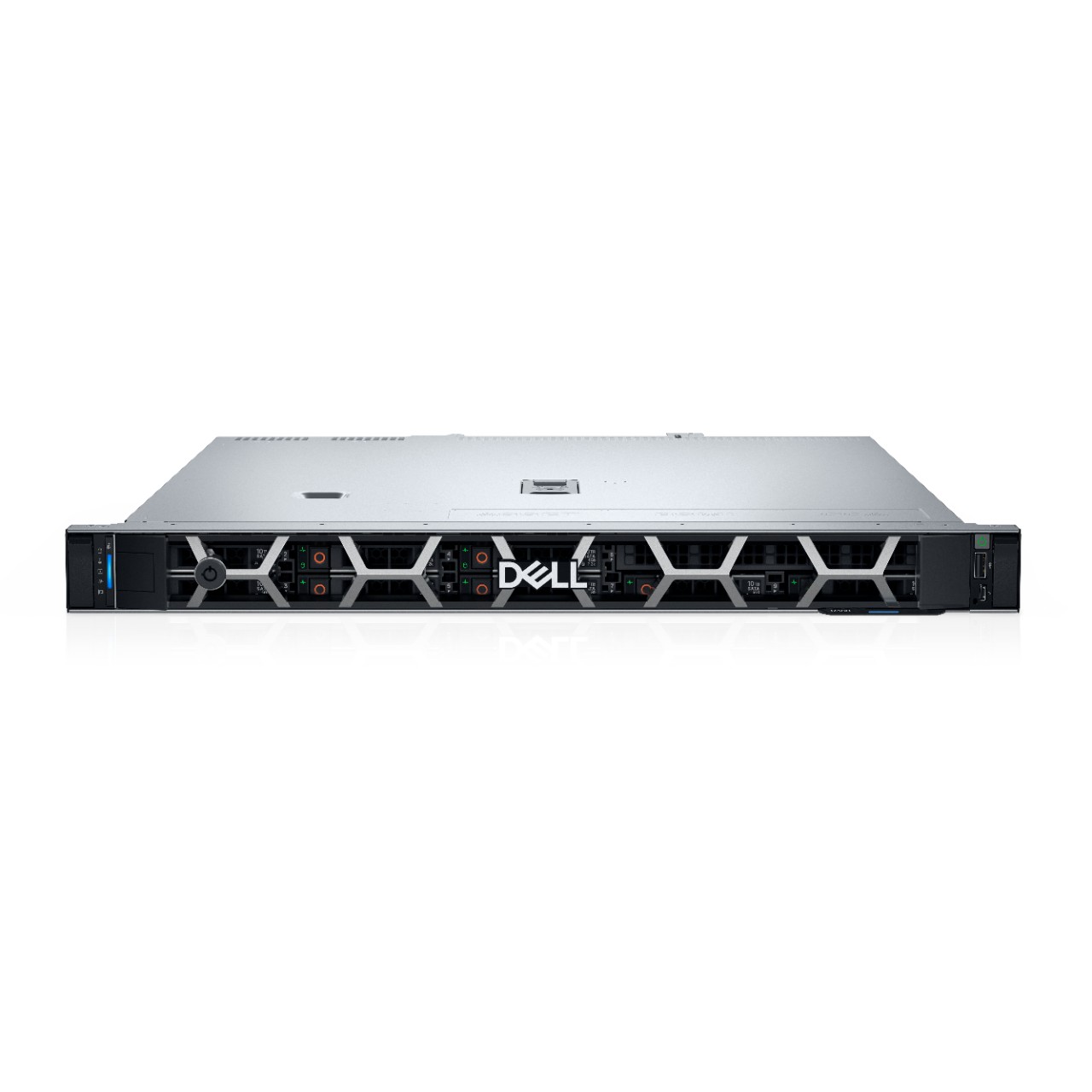Sponsor Content Created With Dell
Top 10 ways to optimize a data center to generate value

Your organization’s data center hosts file servers and business intelligence systems. But is it adding anything tangible that couldn’t be achieved by outsourcing?
Upgrading your data center with AI and machine learning and the latest optimizations can mean the difference between budgeting for yet another cost center and making an investment that adds real value to the business.
1. How do you modernize infrastructure for performance?
Choose the right upgrades, from server specification to network speed, and explore options for AI.
Refreshing the infrastructure with scalable, modular servers offers you the flexibility you need to adapt to changing demands on workload.
Dell PowerEdge series hardware is designed and built for this, whether compact rack servers or XE Series servers intended for AI or high-performance computing (HPC). These servers support Intel and AMD processors, expanded memory channels, and can be managed remotely with Dell iDRAC (Integrated Dell Remote Access Controller).
2. How can intelligent automation reduce complexity?
Employing AI-controlled automation systems removes complex and repetitive workloads, freeing colleagues to dedicate time more efficiently.
Day in, day out, IT teams engage in repetitive tasks. Automating routine maintenance enables IT teams to spend their time improving processes and leaving the firefighting to automated systems.
Your business can benefit from Dell PowerEdge servers with OpenManage lifecycle management. This automated tool, optimized for your servers, can predict hardware failures and push approved firmware updates.
3. How can you build cyber-resilience into your data center?

Implement servers with built-in firmware protections like Secure Boot and silicon root of trust.
By scaling infrastructure, we also scale the attack surface, making every server a potential target. An IBM report by the Ponemon Institute highlighted that the average data breach results in a $4.5m loss.
It’s no surprise, then, that data centers are progressing from reactive patching (that is, resolving issues after-the-fact) to hardware-level protections.
With Dell PowerEdge R and XE Series servers, you’ll find built-in safeguards, such as Secure Boot, System Lockdown, and firmware verification that prevents unauthorized changes.
Optimization Area | Legacy Data Center Challenge | Modernized (Dell PowerEdge-Based) Outcome | Business Value |
Performance & Scalability | Limited compute and storage flexibility | Modular servers scale with demand | Faster service delivery; reduced downtime |
Automation & Management | Manual maintenance, reactive fixes | OpenManage enables predictive management | 40% less downtime, higher IT productivity |
Cyber-Resilience | Patchwork security layers | Built-in silicon root of trust and secure boot | Reduced breach risk, compliance assurance |
Energy Efficiency | High power and cooling costs | Advanced thermal design and dynamic power scaling | Up to 30% lower energy consumption |
AI & Analytics | Data overload with low insight | XE Series optimized for AI and ML workloads | Real-time decision-making; new revenue models |
Lifecycle Optimization | Unplanned outages, asset waste | Predictive telemetry and proactive support | Extended hardware lifespan; lower TCO |
4. How can power and cooling be efficiently optimized?
Switch to lower-power, efficient servers with dedicated cooling solutions.
As energy use is one of the main operating costs in a data center, achieving thermal efficiency is key to a successful hardware refresh.
Dell PowerEdge R and XE Series servers incorporate adaptive cooling and dynamic power management, which means that fan speeds and power draw are based on the server’s workload. The latest designs feature optimized airflow paths and multi-fan redundancy, enabling performance to be maintained even under heavy loads.
5. How can you leverage AI and drive insights and innovation?
With AI-capable servers on site, significantly richer data can be developed, letting you gain greater insight into your most valuable information, and spurring on the next steps in productivity and efficiency across your business
However, the shift to AI servers demands serious compute power and efficient cooling, as handling GPU-intensive processing has become increasingly important.
We need infrastructure that can handle vast volumes of data and complex models without restrictive bottlenecks. AI workloads demand high-speed storage, efficient cooling, and powerful CPUs and GPUs, and Dell PowerEdge XE servers are purpose-built for these factors.
6. How can server management be optimized?

Remote monitoring tools, automation, and enhanced security provisions can greatly improve how your servers are managed, unlocking extra returns without unnecessary oversight.
For years, managing a data center meant managing multiple processes to ensure effective and efficient running, so every time a new operating system and platform was added to the stack, management became more complex.
But thanks to servers which are able to work with and across all major operating system server platforms – whether Linux-based, Windows, or a mixture – resources which were previously needed for management can be allocated elsewhere, boosting productivity.
Whatever operating system you have on your Dell PowerEdge servers, it can be monitored, updated and optimized from a single OpenManage Enterprise dashboard, with analytics and automation handling the routine tasks.
7. How can you scale a data center seamlessly?
Choose servers with a clear hardware upgrade path and a data center with modern cooling to ensure seamless scaling.
Modern workloads need a server environment that is flexible enough to handle anything, from high density data center compute tasks to local edge deployments.
Dell PowerEdge R Series servers are the data workhorses, while the AI powerhouse XE Series servers integrate seamlessly with infrastructure to keep performance consistent across your entire operation.
8. How can infrastructure be aligned for business goals?

To unlock the potential of your infrastructure, it’s crucial to optimize servers, switches, networks, and power to ensure effective access to your data and AI tools whenever it is needed.
Shifting business priorities demand that infrastructure can adapt just as quickly. Optimized data centers can use analytics to guide decision making, and automation to ensure efficient running. Dell PowerEdge servers’ intelligent monitoring and adaptive monitoring allocate resources where demanded.
If you’re investing in modern infrastructure, this is a clear advantage.
9. How can predictive maintenance extend hardware lifecycles?
By relying on Dell’s smart maintenance program, hardware failures can be predicted before they occur, with upgrades avoiding downtime and prolonging hardware.
When you invest in data center infrastructure, it isn’t only about the hardware – you want to keep it running, too. This means planning support, minimizing downtime, and implementing processes to catch issues before they escalate.
Telemetry and predictive analytics allow Dell PowerEdge servers to spot performance anomalies early, and when found, triggering automated fixes or alerting engineers before operations can be impacted.
Dell SupportAssist and OpenManage give engineers the tools they need to keep systems stable and responsive around the clock.
10. How can AI servers improve on legacy servers?

Utilizing AI-enabled tools and processes can help your workers save time and effort on repetitive tasks and queries, delivering solutions and insights faster and more effectively.
Demands on infrastructure grow as a business expands, and scaling successfully requires systems that can adapt, whether through increased automation, generative AI, or deeper analytics on enterprise data.
Dell PowerEdge R Series servers deliver flexibility and performance, while Dell PowerEdge XE Series add AI readiness, aiming to power next-generation workloads to keep your business moving forward.
If you think PowerEdge servers are the right fit to give your business that streamlined edge, visit the Dell website to learn more.
Sign up to the TechRadar Pro newsletter to get all the top news, opinion, features and guidance your business needs to succeed!